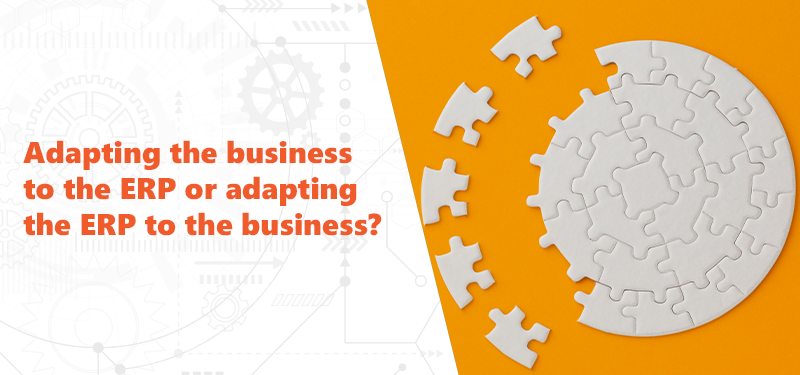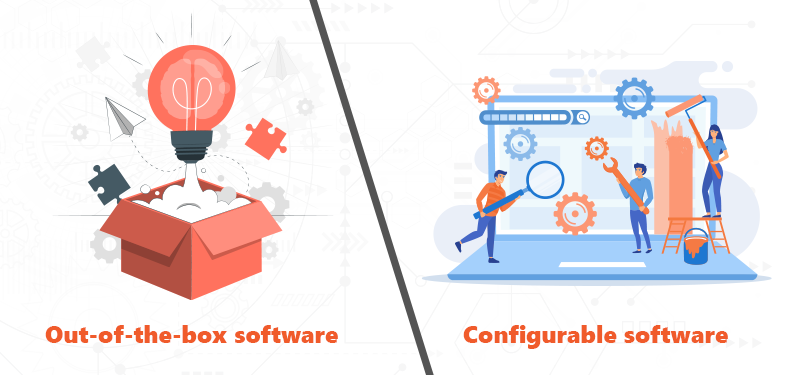Apart from the clear goal of becoming organized and working more efficiently, implementing jewelry management software presents a dilemma: should you adhere to your existing processes regardless of the software's handling, or should you accept how the software manages them?

Jewelry ERP: understanding the basics
 Building an ERP system always begins with creating a system architecture. This architecture establishes the software's logic, the processes it will handle, the technology employed, and the system’s overall behavior.
Building an ERP system always begins with creating a system architecture. This architecture establishes the software's logic, the processes it will handle, the technology employed, and the system’s overall behavior.
This phase is crucial from the perspective of adaptability. If a system is initially built to be rigid, it becomes exceedingly challenging to modify its behavior later on. For instance, if a system is developed with fixed order workflows, changing it to allow customizable workflows requires significant development effort as it impacts the entire system architecture.
In such cases, it may be necessary to rebuild the entire module.
If a system is built to be flexible, can you do anything with it?
The answer is no. Flexibility does not imply that the system can do anything without limitations. Flexibility allows a system to adapt and accommodate various requirements or changes more easily, without the need for custom development. However, there are still constraints and limitations to consider.
This is why it is referred to as a system - it operates within predefined boundaries. In real life, without a system, one might say, "Sometimes we do it this way, sometimes we do it another way."
However, the system doesn't comprehend the concept of "sometimes." You must precisely define the rules for what happens when you choose to do it "this way" versus "that way." I hope you can perceive the distinction.
Let's consider a real-life example: "Sometimes we invoice our clients in CAD, and sometimes in USD." If you manually write the invoice using pen and paper, you have the freedom to decide on the currency at that moment.
In a flexible system, different invoice versions can be configured with a multi-currency option. However, it is still necessary to define when the system should trigger the appropriate invoice version. This rule could be based on the client's billing address.
By now, is it clearer what these boundaries mentioned earlier entail?
PIRO's perspective on this dilemma
Based on our experience, jewelry companies seeking jewelry software come from diverse backgrounds. Just as individuals perceive the world differently based on their education and previous experiences, jewelry companies also have varying perspectives on jewelry software and how it should function for their specific needs.
Some companies we have encountered hoped for the ideal scenario where neither system customization nor process adjustment is required. Typically, these companies had prior experience using Excel or other simple tools and sought an easy-to-implement solution.
The appeal of out-of-the-box software lies in its promise of quick implementation, minimal customization costs, and a short learning curve.

However, it also means that the business must adapt to the system, as the configuration offers only one door, one approach. If the solution aligns well with the company's processes, it is considered a success, as no internal changes or workarounds are needed.
Though there are fortunate cases where this is possible, based on our extensive experience working with numerous jewelry manufacturers and wholesalers, we have found that these companies possess processes that contain many unique elements. The likelihood of an out-of-the-box solution fitting them well is low.
Those who have implemented some system in the past tend to grasp the following concept better: no software can fully adapt to their processes.
PIRO Fusion: more customizable than competitor jewelry software

As you may have gathered from our remarks, we rarely work with companies seeking off-the-shelf solutions. Our system has been designed to be flexible and adaptive, and we take pride in our differentiation from competitors in this regard.
However, is that enough for happiness? Does it mean that our software can accommodate any process or scenario? Certainly not.
What this truly implies is that we provide our customers with more options, showcasing multiple doors, yet we still need to identify the right one during the implementation process. This is why implementing the entire system may take more time. With PIRO Fusion, elements and blocks can be custom-defined before constructing a fully tailored process, resulting in a configuration better suited to individual requirements.
During the system configuration, our project manager will frequently ask: "What happens when you do this or that?" This is because PIRO Fusion (or any other ERP software) doesn't comprehend the concept of "sometimes."
Which companies benefit the most from this? The Solution to the Adaptive Dilemma.
In summary, the terms "flexible" and "adaptive" can be misconstrued. Flexibility means that the system offers more choices, and many components can be defined according to the customer's needs. However, these options are not limitless. A software is not flexible in the way we use the term for a plasticine.
Even flexible software has a structure but can provide flexibility within that structure. The core structure cannot be altered, so there may be instances where even an adaptive jewelry software cannot precisely replicate a company's unique process. Does this mean businesses should abandon the software altogether?
 Certainly not. Sometimes, making slight adjustments to internal processes becomes part of the solution. The software adapts to the business, but the organization must be willing to modify its processes when the configuration hits a roadblock and we encounter limitations with the configuration.
Certainly not. Sometimes, making slight adjustments to internal processes becomes part of the solution. The software adapts to the business, but the organization must be willing to modify its processes when the configuration hits a roadblock and we encounter limitations with the configuration.
Finding the right balance between these approaches is critical for a successful ERP implementation that optimally supports the organization's goals and objectives. It is worth noting that ERP implementations can fail if the company is unwilling to adapt to the system to a certain extent.
Historically, PIRO clients who have gained the most benefits and fully capitalized on the flexibility of our system were open to slightly adapting their business to the ERP when necessary. It takes two to tango: being excessively rigid with your requirements negates the system's flexibility, and being flexible with your requirements holds no value if the chosen system is overly rigid.
This presents the solution to the dilemma. If your company is ready to elevate its operations, feel free to contact us with confidence.





